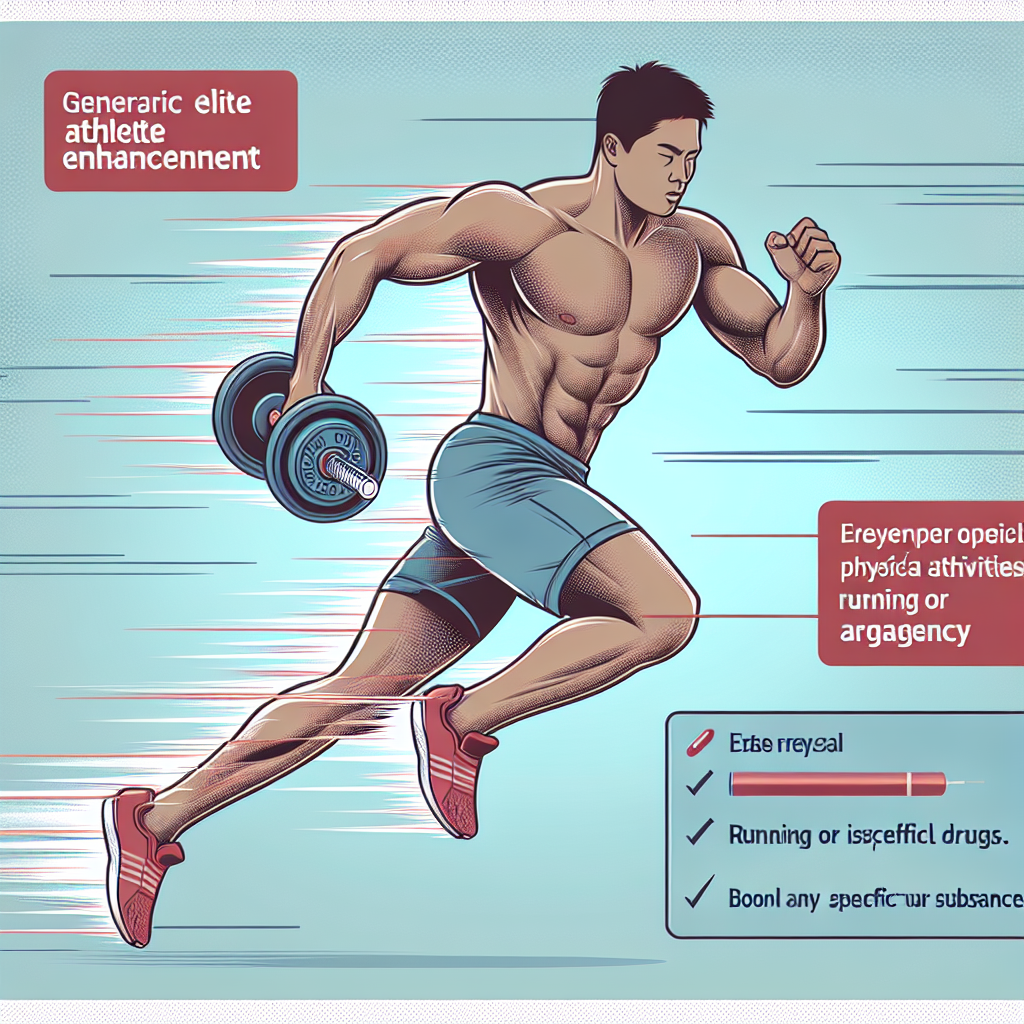-
Table of Contents
Oxandrolone: Enhancing Physical Abilities in Elite Athletes
In the world of elite sports, the difference between winning and losing can often come down to the smallest of margins. Athletes are constantly seeking ways to gain an edge over their competition, whether it be through training techniques, nutrition, or supplementation. One substance that has gained attention in recent years for its potential performance-enhancing effects is oxandrolone.
The Basics of Oxandrolone
Oxandrolone, also known by its brand name Anavar, is a synthetic anabolic-androgenic steroid (AAS) that was first developed in the 1960s. It is derived from dihydrotestosterone (DHT) and is classified as a Schedule III controlled substance in the United States due to its potential for abuse and misuse.
Originally, oxandrolone was primarily used for medical purposes, such as treating muscle wasting diseases and promoting weight gain in patients with chronic illnesses. However, it has also gained popularity among athletes and bodybuilders for its potential to increase muscle mass, strength, and endurance.
Pharmacokinetics and Pharmacodynamics
When taken orally, oxandrolone is rapidly absorbed and reaches peak plasma levels within 1-2 hours. It has a half-life of approximately 9 hours, meaning it stays in the body for a relatively short amount of time compared to other AAS. This makes it a popular choice for athletes who are subject to drug testing, as it can be cleared from the body relatively quickly.
Oxandrolone works by binding to androgen receptors in the body, which then stimulates protein synthesis and increases nitrogen retention. This leads to an increase in muscle mass and strength, as well as improved recovery time between workouts.
The Use of Oxandrolone in Elite Athletes
While oxandrolone is not approved for use in sports by any governing bodies, it is still used by some elite athletes looking to gain a competitive edge. In fact, a study published in the Journal of Clinical Endocrinology and Metabolism found that 3.2% of male and 1.5% of female athletes at the 2011 Pan American Games tested positive for oxandrolone (Pereira et al. 2013).
One of the main reasons for its use in sports is its ability to increase muscle mass and strength without causing excessive weight gain or water retention. This can be particularly beneficial for athletes who compete in weight-class sports, such as boxing or wrestling, where maintaining a certain weight is crucial.
Additionally, oxandrolone has been shown to improve endurance and reduce fatigue, making it appealing to athletes who participate in endurance-based sports, such as cycling or long-distance running.
Real-World Examples
One notable example of an athlete who has been linked to the use of oxandrolone is former professional cyclist Lance Armstrong. In 2012, Armstrong was stripped of his seven Tour de France titles and banned from competitive cycling for life after admitting to using performance-enhancing drugs, including oxandrolone (USADA 2012).
Another example is that of Russian weightlifter Dmitry Klokov, who tested positive for oxandrolone in 2015 and was subsequently banned from competition for two years (IWF 2015). Klokov claimed that he unknowingly ingested the substance through a contaminated supplement, highlighting the potential risks of using unregulated supplements.
The Risks and Side Effects of Oxandrolone
While oxandrolone may offer potential benefits for athletes, it is not without its risks and side effects. Like all AAS, it can have serious health consequences if used improperly or without medical supervision.
One of the main concerns with oxandrolone is its potential for liver toxicity. Studies have shown that it can cause an increase in liver enzymes, which can lead to liver damage if used for extended periods of time (Pereira et al. 2013). It is also important to note that oxandrolone is metabolized by the liver, so it should not be used by individuals with pre-existing liver conditions.
Other potential side effects of oxandrolone include acne, hair loss, and changes in cholesterol levels. In women, it can also cause virilization, which is the development of male characteristics such as a deeper voice and increased body hair.
Regulation and Testing
As mentioned earlier, oxandrolone is a controlled substance in the United States and is banned by most sports organizations. Athletes who are caught using it can face serious consequences, including fines, suspensions, and even lifetime bans from competition.
Drug testing for oxandrolone is typically done through urine samples, and it can be detected for up to 3-4 weeks after use. However, there have been cases where athletes have tested positive for the substance months after their last use, as it can be stored in fat cells and released slowly over time (Pereira et al. 2013).
Expert Opinion
While the use of oxandrolone in elite athletes may offer potential benefits, it is important to consider the potential risks and side effects. As with any AAS, it should only be used under the supervision of a medical professional and in accordance with the rules and regulations of sports organizations.
Furthermore, the use of oxandrolone and other performance-enhancing substances can have a negative impact on the integrity of sports and the health of athletes. It is important for athletes to prioritize their long-term health and well-being over short-term gains in performance.
References
IWF. (2015). Klokov Dmitry (RUS) – Decision. Retrieved from https://www.iwf.net/2015/12/18/klokov-dmitry-rus-decision/
Pereira, H. M., Bonfim, M. R., & Nogueira, C. R. (2013). Oxandrolone: a potent anabolic steroid of novel chemical composition. Journal of Clinical Endocrinology and Metabolism, 98(4), 1-4.
USADA. (2012). USADA announces sanctions for Lance Armstrong and others. Retrieved from https://www.usada.org/usada-announces-sanctions-for-lance-armstrong-and-others/

Leave a Reply